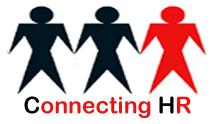Now that Twitter has cemented itself as a valid tool for individuals to use in a ‘professional’ capacity, many users of the ‘micro-blogging’ site are choosing to create separate accounts for personal and professional use – and why not? After all, a ‘professional account’ allows one to convey a ‘professional persona’, and reduces the risks of alienating business contacts with inane chatter about last night’s football, right?
On the surface, it seems that this is, indeed, the correct modus operandi. Harking back once more to the old ‘Facebook = personal, LinkedIn = professional debate’, separate Twitter accounts seem to be a viable practice in order to ensure you communicate with the appropriate people through the appropriate ‘channel’. But this, in my opinion, is where potential issues start to arise.
People’s increasing use of Facebook in a professional capacity has undoubtedly started to blur the boundaries between the ‘personal’ networking site and its professional competitor, LinkedIn. Nevertheless, this willingness to embrace the former as a professional tool is still very much academic; the fact remains that these are two, very separate, Social Media sites – but the ‘identity’ of the user remains the same – Callum on Facebook and Callum on LinkedIn.
Which brings me on to my Twitter conundrum.
I have no doubt that the opines contained within this post will split opinion and cause a great deal of constructive criticism – however the fact remains that Twitter is one channel, just as Facebook and LinkedIn are both unique channels. If you use Facebook for personal use and LinkedIn for professional use, the fact remains that you are on each individual channel ‘as an individual’.
Now, I’m not talking about managing a corporate account – after all, I manage three, comprising accounts for Stopgap, Fitzroy and Courtenay HR. This is not the issue in question: after all, I am Callum and Stopgap is Stopgap – two separate entities. I refer instead, to ‘individuals’ (the clue’s in that label folks) who have a ‘John Smith’ account along with a ‘John Smith {company name}’ account.
I recently set up a ‘professional account’ (@Stopgap_Callum) in order to establish a professional presence in order to differentiate my professional followers from my personal followers. But after a few weeks of operating in this Jekyll and Hyde fashion, I’ve come to the conclusion that this simply does not work. Why? There are numerous reasons.
• Many, if not all, of my ‘professional followers’ are also following ‘personal Callum’.
• People are sending @replies to both @callumsaunders and @Stopgap_Callum, in order to gain my attention, and thus a response, through the quickest channel. Twitter, after all, is a communications tool.
• You know what? I actually want to share many of my interesting ‘professional tweets’ with people I know only follow my personal account. Why should they be subject purely to tweets concerning Tottenham’s latest signing, when I have knowledge to share and real value to offer?
We live in an age of digital transparency – all of us have a substantial digital footprint, which means people can build a picture of us through Social Media channels whether we like it or not. So why the need to create split personalities on Twitter, when this is just one channel in which we make up our overall personal brand?
Studies have shown that users tweet about different topics at different times of the day, which makes sense really. When at work, I have my ‘professional hat’ on. In the evenings, I’m just plain old Cal. And since Twitter is an online extension of our personalities, it naturally follows that online behaviour follows this pattern.
Now, I’d be foolish to sit here and say that you should tweet professional messages during the day, then regress to a drunken yob in the evening, tweeting everything from offensive swearwords to sexist comments and derogatory remarks about your workplace. Common sense should surely prevail, since Twitter remains a publishing tool through which you are publishing accessible content – one should feel free to be oneself, but individuals need to be aware that people can access your messages if they look hard enough.
The point I wish to make is that I am not a Victorian doctor who is able to drink varying Social Media potions and become different personalities. I am one individual. I may chose to keep my Facebook account separate from my LinkedIn account, but these are two channels in which I have one identity each – not two.
Twitter may have great use as both a personal and a professional tool, but the fact remains that it is one channel. For better or worse, we only have one identity as individual people, and this is why Twitter should reflect this: unless of course, you are indeed Dr Jekyll or Mr Hyde.







